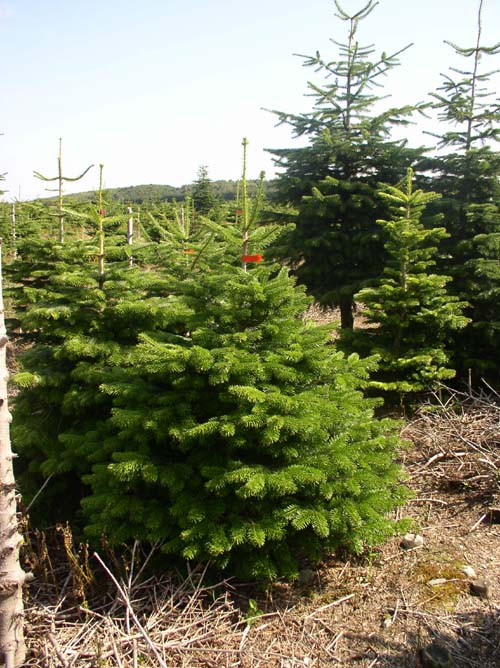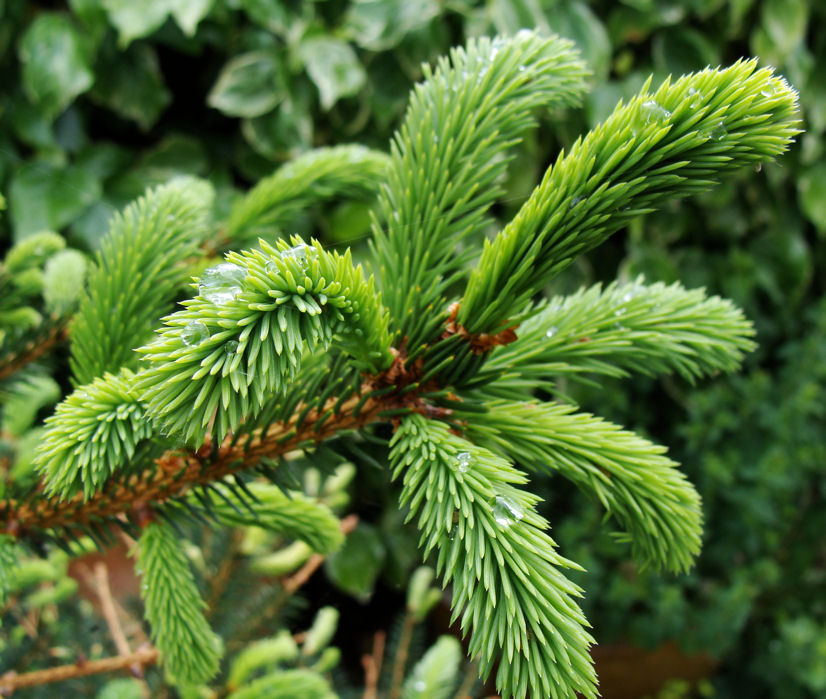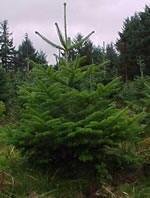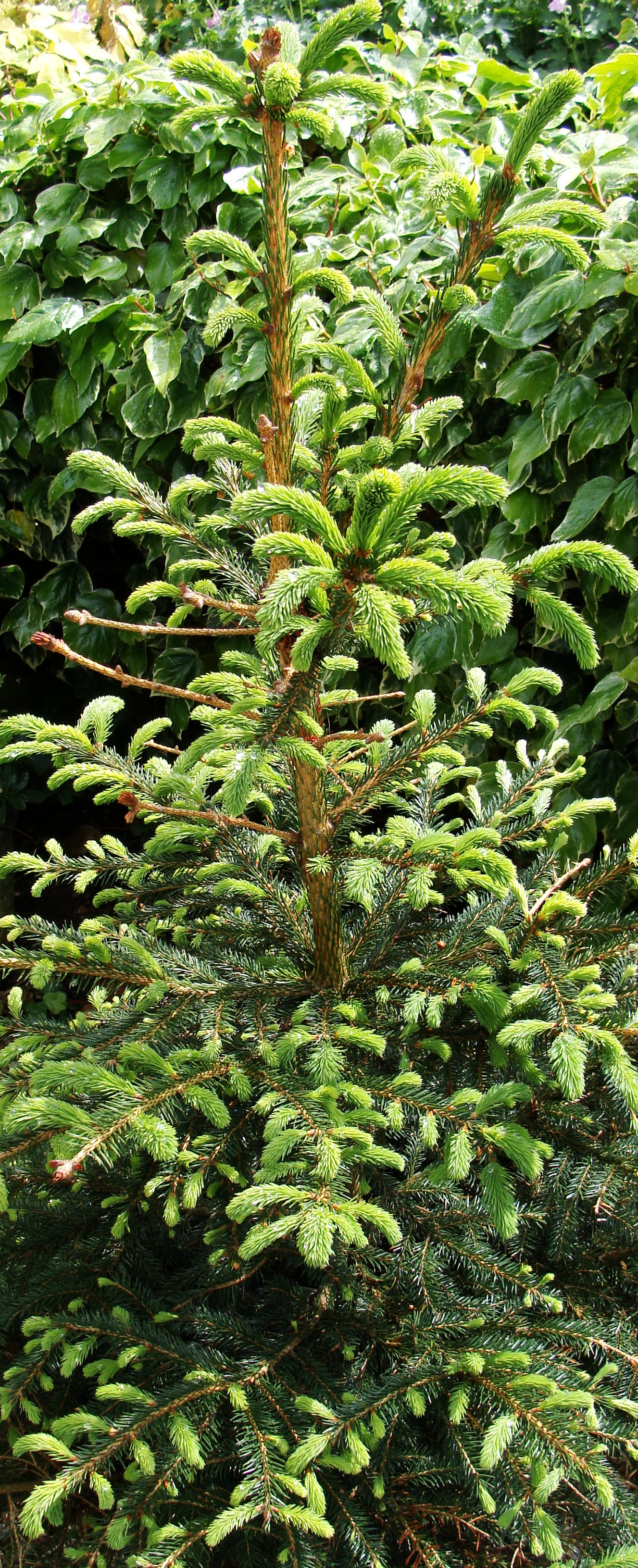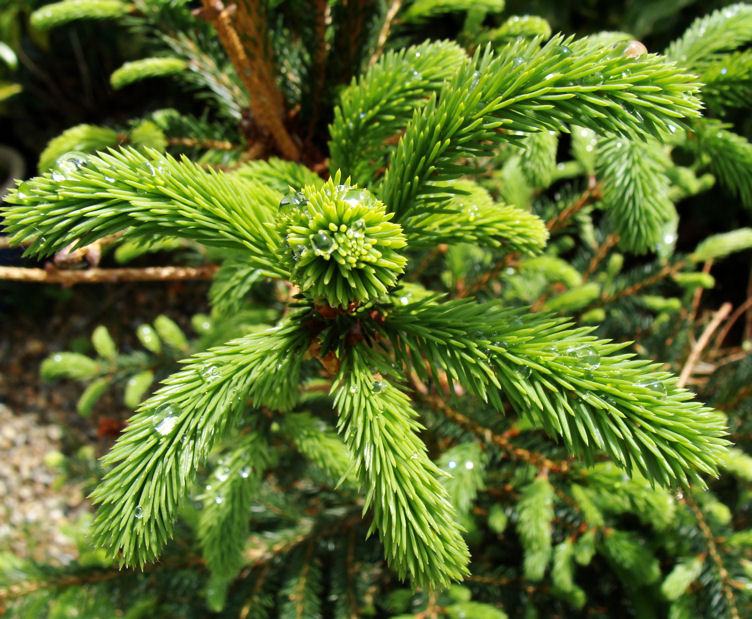The Trees
Norway Spruce (Picea abies)
The Norway spruce continues to be a popular choice in the UK and is the traditional species for the British Christmas tree. It is the species you will find erected in Trafalgar Square and 10 Downing Street each year. It has the triangular shape, dark green needles, gently drooping branches and a distinctive 'pine' fragrance. It's dense bushy shape is excellent for decorating. It is relatively quick growing which explains it's apparently cheap price compared to other species. It's one slight drawback is that needle retention is not it's strongest point. It does need to be keep well watered and away from direct heat sources to maintain it's quality throughout the Christmas period. If used outdoors there is no problem.
Nordmann Fir (Abies nordmanniana)
The Nordmann Fir has gained popularity in recent years due to it's good needle retention qualities and ability to look good throughout the festivities. Often described as being non-drop, this is not strictly true, but it will retain it's needles better than Norway Spruce. It has soft, deep green foliage, smooth grey bark and a good triangular shape. It tends to be slightly more open and less dense than Norway. The needles when crushed give a very aromatic citrus smell. More expensive than other species due to it's slow growth and work needed to maintain a good shape. There are many different quality grades of this species so buyers need to be aware of this when comparing prices.
Blue Spruce (Picea pungens glauca)
Related to the Norway Spruce this is one of the most attractive Christmas Trees. It has a good natural shape and is distinguished by it's striking blue-green (sometimes almost electric blue) foliage. It has the distinctive 'pine' scent. It commands attention even without decoration. The needles are very sharp so care needs to be taken with handling it. Like all spruce it needs to be kept well watered to keep it at it's best.

